Collaborative Delivery
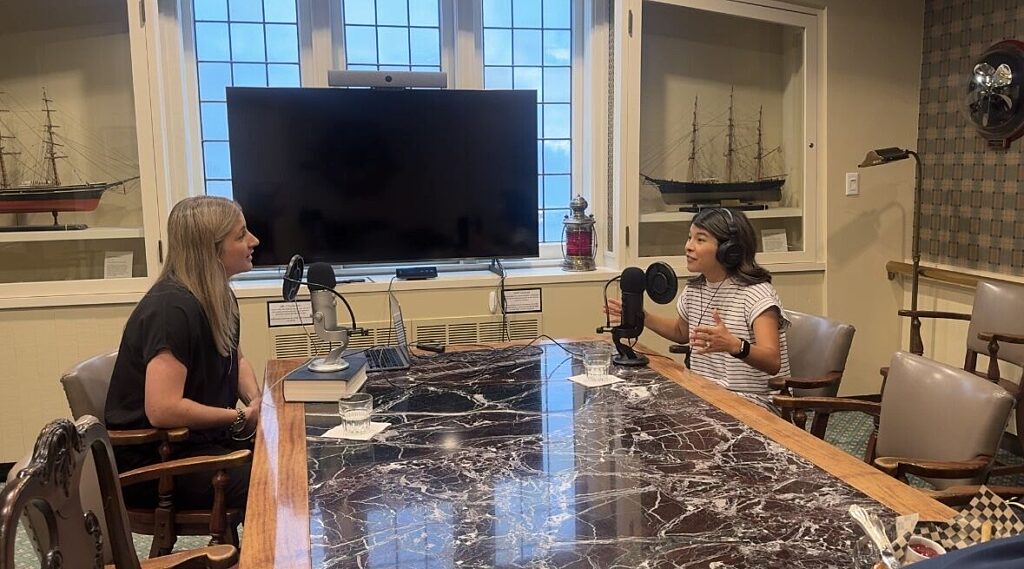
Insights 08.06.2025
The Weekly Podcast with Rachel Horgan

Tess Wakasugi-Don
Principal
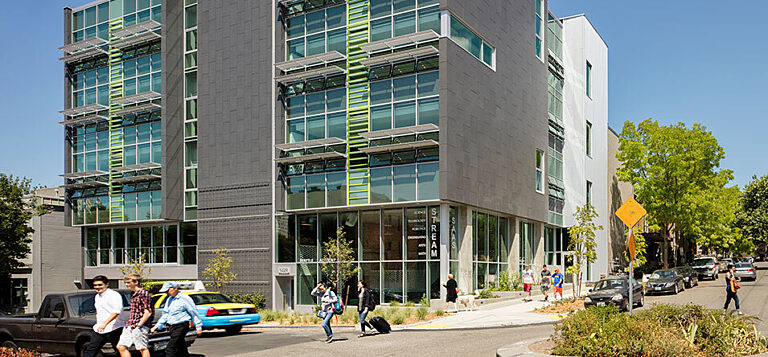
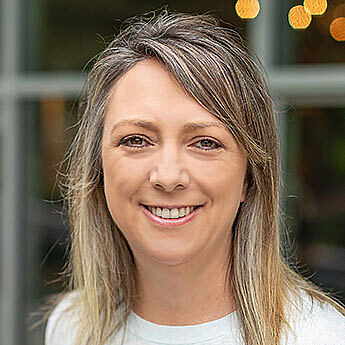
Delivering Seattle Academy of Arts and Sciences’ new STREAM building [Science, Technology, Robotics, Engineering, Art and Math] is one of the most rewarding experiences of my career to date. It’s a beautiful building; a true product of collaboration, vision and inspiration that the students, faculty and parents of SAAS are thrilled with. I’ve had many opportunities to talk passionately about the design, execution and delivery, as well as the exciting nature of the program the building houses, but upon reflection, the main reason this project is so close to my heart is because I’m a parent. I could put myself in the shoes of the 700+ students’ parents and truly understand their concerns. As Project Manager—and a mother—I knew our first priority was to keep these amazing kids safe, on task, and educationally involved with the project while we dug a 25-foot hole in their backyard, punched through walls, delivered materials, and created something special right before their very eyes.

The SAAS Stream Building, completed June 2015.
From day one, this project was all about SAFETY and keeping the school FUNCTIONING smoothly on its busy urban block amid the dust and disruption; INVOLVING the students in creating a school that addressed their needs; and creating meaningful RELATIONSHIPS among students, parents, teachers and the neighborhood.
Long before a shovel bit the dirt, we set up shop at the site to put a face to the GLY team who would be working in the neighborhood for the next 12 months. During this community outreach, we introduced ourselves, shared drawings and schedules, answered questions, and dispersed contact information so residents and parents knew exactly who to call—and who would respond—in the case of concerns or emergencies.
The biggest challenge by far on this project was to find a way to integrate a construction crew and their equipment into an active student campus with as little disruption as possible. Team members Garth Stoppard [Superintendent] and Craig Wallace [Senior Project Engineer] were instrumental in this process.
NOTICE BOARD. Throughout construction, neighbors were kept up to speed on a weekly basis via a notice board showing upcoming events that they may have questions or concerns about.
SAFE ROUTES. Going into demolition, the first thing we did was re-establish emergency exits. We created temporary exit corridors to move students safely out of the building and clearly marked the routes with signage.
GETTING CREATIVE. Working on a job within such restrictive physical parameters is one of the greatest incentives to get creative. Superintendent Garth Stoppard realized we could reuse sturdy old formwork [molds to create concrete walls] to make a temporary exit corridor for students. The top of this corridor doubled up as laydown space for materials on the tight site, keeping the sidewalks clear. Thoughtful solutions like this go a long way towards making everyone’s life easier.
ELIMINATING STRESS + FRUSTRATION. The other potential source of great frustration is the logistical challenge of student pick-up and drop-off in a busy urban location. Thinking through timing and access needs well in advance, we were able to avoid specific activities at peak traffic times and integrate others into the flow at calmer hours. We also prioritized the students’ schedule ahead of ours. When we heard that student testing was scheduled at the same time as a concrete pour, we quickly adapted and shifted our plans to avoid that level of disruption on an already stressful day for the students.
AN IMPORTANT ROLE. The traffic controller is truly the lynchpin on a project of this size and scope. This person is the face of GLY to the neighborhood at large and has vast interaction with the building users, visitors and neighbors. Their role is essential in securing everyone’s safety. Our flagger, Ewa Poznanska, was a guardian on this project. Not only was she directing the traffic, she was responsible for guiding kids across the street and around the site with limited access to sidewalks before and after school.
“Ewa Posnanska has always impressed me as being wonderfully proactive in anticipating traffic situations. She is a wonderful representative for your company, making sure that the neighborhood is as orderly as possible in a very trying situation … I was greatly impressed by her community concern.”
| anonymous

Flagger, Ewa Poznanska, stands beneath the rising STREAM building.

Senior Project Engineer Craig Wallace was a key player in early coordination with the community. His blog post invites neighbors to meet the team and ask questions about the project.
A colleague of mine once observed “I never learned anything with my mouth open.” We are often so busy trying to make things happen that we forget how important it is to stop and listen. Our safety achievements on this job are directly related to the amount of time we spent listening to concerns, but the actual building is the result of a lot of time spent listening to the hopes, needs, desires and aspirations of the SAAS community.
From Miller Hull’s early charrettes with SAAS students we learned just how important it was to incorporate as many sustainable and natural features as possible. As we moved through the preconstruction process the desires of the students were foremost in our minds, and it drove a high level of collaboration between team members as we strove to find ways to give them as many features as possible within the budget. We were able to incorporate natural lighting, operable windows, automated louvers, roof top solar panels, bio-retention planters, water re-use and energy efficient heating and cooling solutions.

Cistern collects up to 11,900 gallons of rain water.
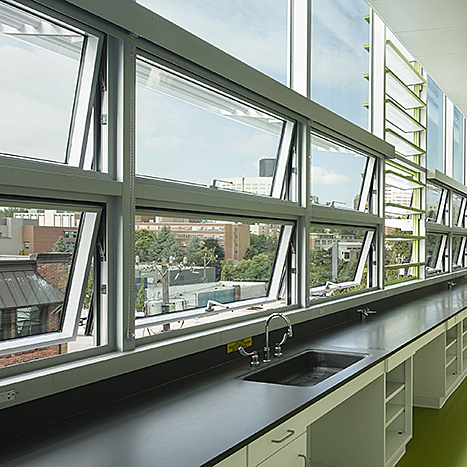
Automated louvers + operable windows for natural ventilation.
The students also wanted the building to provide visual proof to the neighborhood that the community within respects its connection to the natural world and is committed to sustainable practices. Although we couldn’t include the desired full scale green roof due to space limitations, we were able to incorporate a smaller version on top of the connection bridge and add green screens on exterior walls facing the neighborhood.
Undoubtedly one of the construction highlights was when two lucky students were carefully escorted into the excavation to bury well wishes—or “Dreams for STREAM”—written by donors, trustees and committee members.
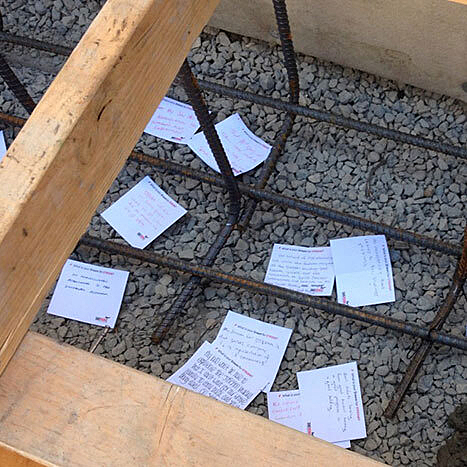
Donors, trustees and committee members wrote their well wishes for the building at the ground-breaking ceremony. students were able to place them in the mat footing to be buried in the concrete foundation.
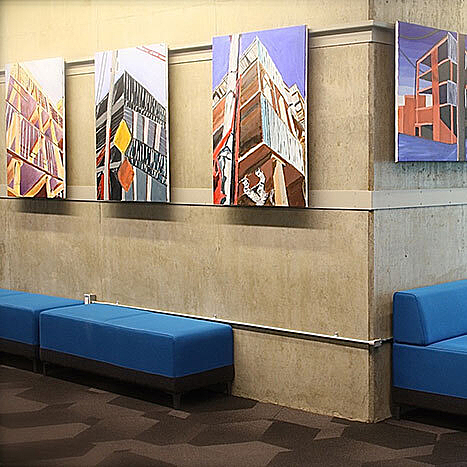
Student paintings of STREAM work in progress [photo courtesy of SAAS].
At day’s end, when you know everyone is safe and secure, there’s time to reflect on the real meaning of the work you’re doing. You realize that construction is fundamentally a people business. The relationships we build when we pour our hearts and souls into this process for months and often years are the greatest reward possible.
Over the years I’ve been involved with almost every building type, but this was the first time I was so fully immersed in a school project. Working with and among these bright young individuals to create a place in which they can safely learn and flourish has been without a doubt one of the most rewarding experience of my career. Since I’ve become a mother I am more invested than ever in education, and making sure we do right by our kids in preparing them for our complicated world.
I’m very excited to have the opportunity to continue this relationship with SAAS when work starts on their new Middle School building next year. I’ve been thinking of all kinds of things we could do to enhance the experience for the students. There are so many opportunities to use the construction process as a science lesson, or to create a math competition to try to derive the correct number of cubic yards of concrete we will use on site. The possibilities are endless!

Project Executive
With GLY since 1999, Amy has managed projects in all sectors and of all sizes. This versatility is what helps her guide teams in keeping the end goal in mind while addressing day-to-day challenges and complex problem-solving. She is an alumnus of the University of Washington with a BS in Construction Management and Minor in Architecture, has served on the board of her local YMCA, and is active in NAIOP and CREW. After work, Amy chases two very active children and the lifelong task of home remodeling.